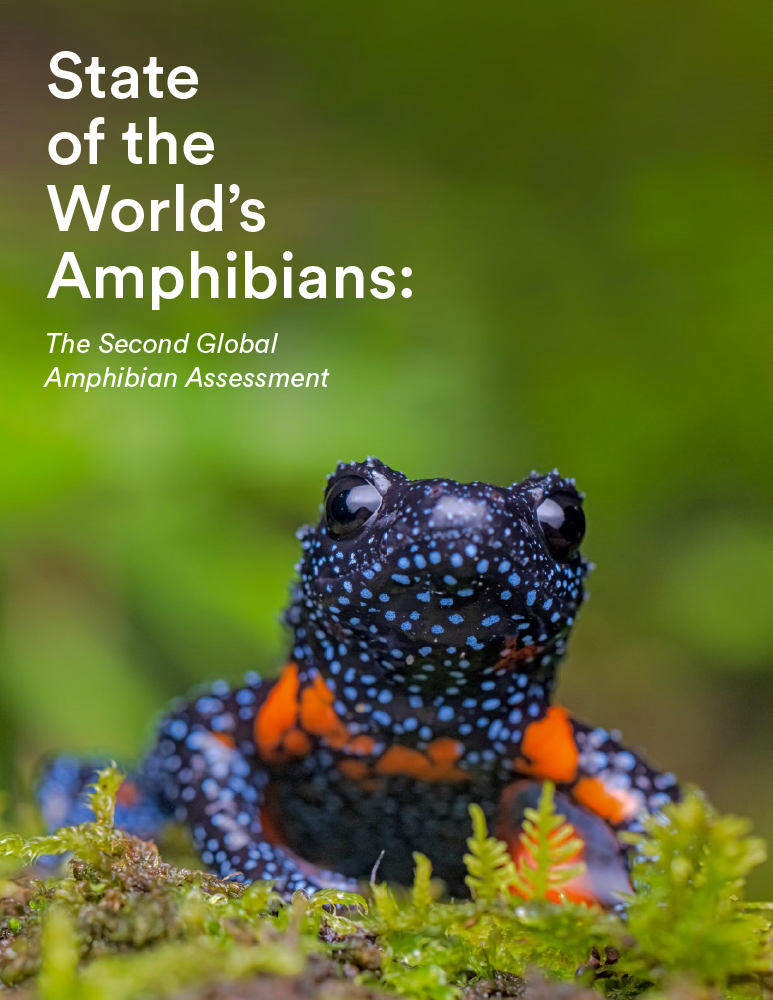State of the World Amphibians: A Roadmap For Action
Graphic source: ‘State of the World’s Amphibians: The Second Global Amphibian Assessment,’ Re:wild, Synchronicity Earth, IUCN SSC Amphibian Specialist Group, 2023. Photo credit: Sandeep Das.
Citation: Re:wild, Synchronicity Earth, IUCN SSC Amphibian Specialist Group. 2023. State of the World’s Amphibians: The Second Global Amphibian Assessment.
The “State of the World Amphibians: The Second Global Amphibian Assessment” report is a comprehensive analysis of the current status of amphibians across the world. This work is the result of the Second Global Amphibian Assessment (GAA-2), which assessed the extinction risk of 8,011 species worldwide, undertaken by the IUCN SSC Amphibian Specialist Group Amphibian Red List Authority (ARLA) with the help of hundreds of scientist from all over the world, and financially supported by Re:wild, Synchronicity Earth, Rainforest Trust, Ibat, Detroit Zoological Society, MUSE-Museo delle Scienze, The Kering group, SEE, Dilmah Conservation, Honolulu Zoo, and Zoos Victoria
This report is more than an academic exercise; it’s a call to action for everyone concerned about the future of amphibians. This comprehensive guide assesses the extinction risk of 8,011 amphibian species worldwide and serves as a roadmap for targeted conservation action.
Why This Matters
Amphibians are the most endangered vertebrate group, with 41% of species facing the threat of extinction. The report not only identifies which amphibians are at risk but also pinpoints their locations and the specific threats they face. This information is crucial for prioritizing conservation efforts and resources effectively.
A Unified Approach
The report emphasizes the need for a collaborative approach to conservation. It calls upon government agencies, donors, academia, and non-governmental organizations to unite in their efforts. Groups like the Amphibian Survival Alliance, IUCN SSC Amphibian Specialist Group and Amphibian Ark are highlighted as key players in this global endeavor.
Actionable Insights
The report provides actionable recommendations across various conservation strategies, from habitat protection and restoration to disease management and policy change. These insights guide conservationists, policymakers, and researchers in implementing effective measures to protect amphibians.
Essential Tools for Amphibian Conservation
In the complex landscape of amphibian conservation, a multi-faceted approach is essential for making a meaningful impact. The “State of the World Amphibians” report outlines a comprehensive set of tools designed to address the myriad challenges facing these vulnerable species. From influencing public policy through effective communication to leveraging advanced technologies for species preservation, each tool serves a unique and critical function. Whether you’re a conservationist, researcher, or concerned citizen, understanding these tools can empower you to contribute more effectively to amphibian conservation efforts.
Key Biodiversity Areas (KBAs) and Irreplaceable Sites
The “State of the World Amphibians” report underscores the importance of specific habitats that are crucial for the survival and conservation of amphibians. These include Key Biodiversity Areas (KBAs), Alliance for Zero Extinction (AZE) Sites, and Threatened Amphibian Landscapes (TALs). So, what do these terms mean, why are they significant, and how do they interconnect to form a larger framework for effective amphibian conservation?
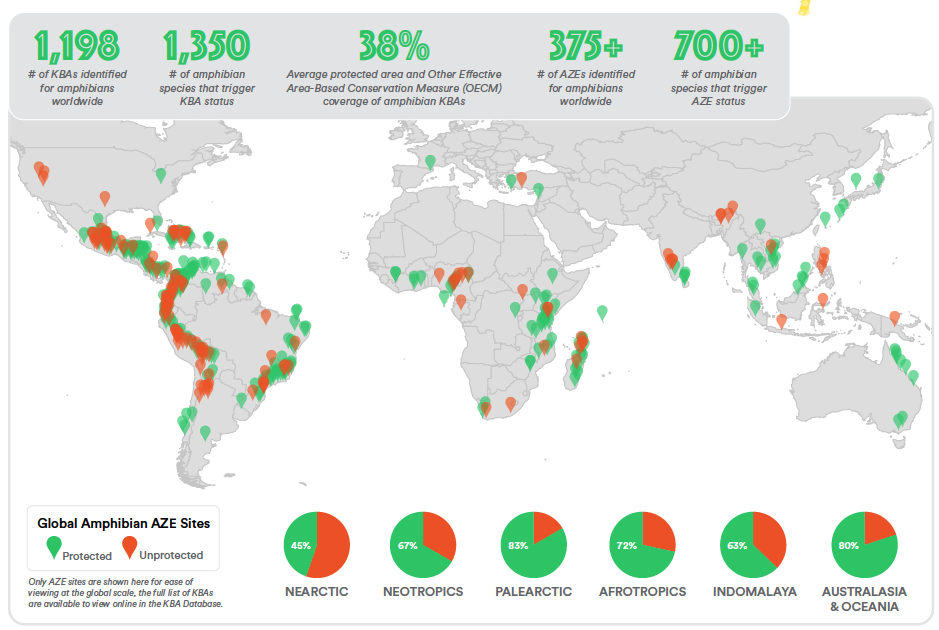
Graphic source: ‘State of the World’s Amphibians: The Second Global Amphibian Assessment,’ Re:wild, Synchronicity Earth, IUCN SSC Amphibian Specialist Group, 2023.
Combating Disease: Chytridiomycosis and Bsal
Infectious diseases like chytridiomycosis and Bsal (Batrachochytrium salamandrivorans) continue to pose severe threats to amphibians, even in protected habitats. While some reports suggest that the most acute phase of the chytridiomycosis epidemic may have passed, the disease remains a significant and ongoing threat to many amphibians worldwide. The emergence of Bsal, particularly in Europe, adds another layer of urgency to the situation. The need for dedicated action to combat these diseases and protect vulnerable amphibian populations has never been more urgent. The following urgent actions are needed:
Quick Facts
- 41% of amphibians are globally threatened with extinction, making them the most threatened vertebrate group.
- Salamanders are particularly at risk, with 3 out of every 5 species threatened with extinction.
- The number of amphibian extinctions could be as high as 222, considering both confirmed and potential extinctions.
- Habitat loss is the most common threat, affecting 93% of threatened species.
- Since 1980, the extinction risk of 63 species has been reduced due to conservation interventions, proving that conservation works.
- The Neotropics, home to almost half of the world’s amphibians, is also the most highly threatened realm, with 48% of species at risk of extinction.
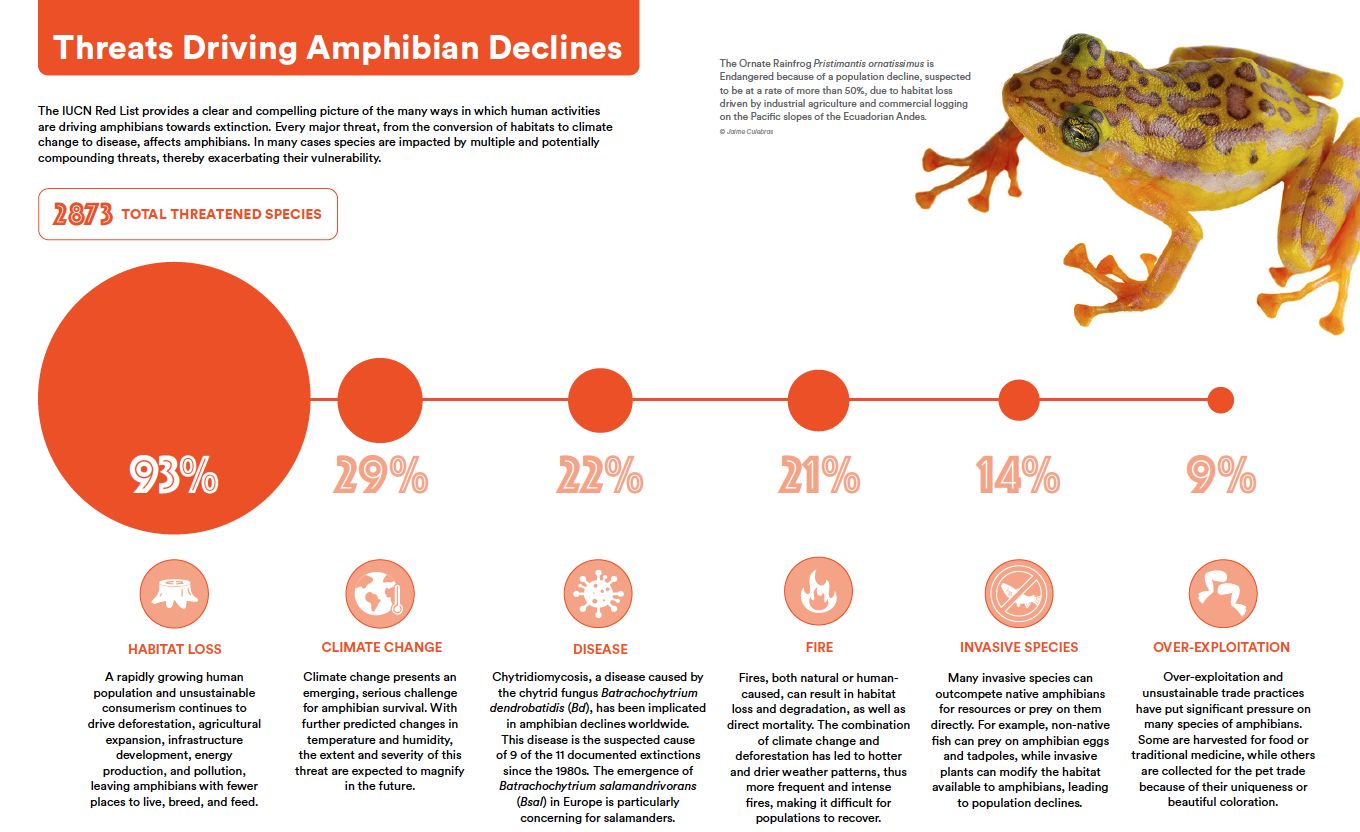
Graphic source: ‘State of the World’s Amphibians: The Second Global Amphibian Assessment,’ Re:wild, Synchronicity Earth, IUCN SSC Amphibian Specialist Group, 2023. Photo credit: Jaime Culebras.
Identifying the Culprits: Key Threats to Amphibians
Amphibians face a myriad of threats, from climate change to infectious diseases. Understanding these threats is the first step in effective conservation.
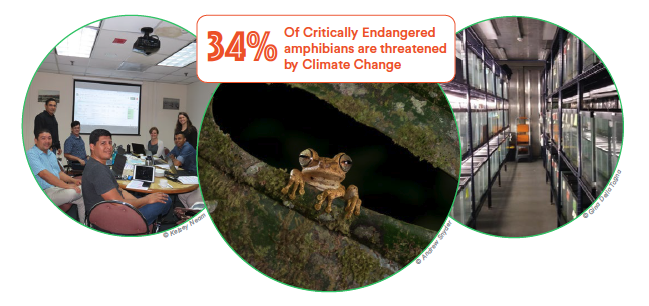
Graphic source: ‘State of the World’s Amphibians: The Second Global Amphibian Assessment,’ Re:wild, Synchronicity Earth, IUCN SSC Amphibian Specialist Group, 2023. Photo credits (left to right): Kelsey Neam, Andrew Snyder and Gina Della Togna.
On the Brink: Amphibians at Greatest Risk of Extinction
Amphibians at the highest risk of extinction are categorized as Critically Endangered (CR), with optional tags of Possibly Extinct (CR(PE)), and Possibly Extinct in the Wild (CR(PEW)). The report reveals that extensive habitat loss has led to high concentrations of CR species in regions like the Atlantic Forest of Brazil, the Cameroonian Highlands, and the Western Ghats of India. In China and Mainland Southeast Asia, species are under extreme pressure due to both habitat loss and over-exploitation.
Islands with endemic species, such as Sri Lanka, Madagascar, and the Caribbean, are also witnessing species being pushed to near-extinction due to high rates of deforestation. Other areas with high concentrations of CR species include the tropical rainforests of Mesoamerica, the Andes of South America, and northeast Australia, where disease and habitat loss have severely impacted populations.
Highly Threatened Genera of Amphibians
Species within the same genus often share common ancestry and similar characteristics, making them vulnerable to the same threats. This section aims to shed light on these highly threatened genera, providing a focused lens through which conservation efforts can be channeled.
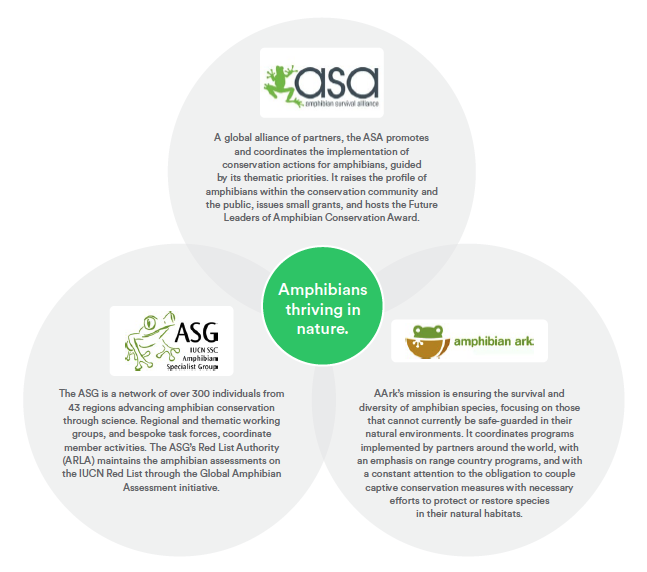
Collaboration for Conservation
The challenges facing amphibians are too great for any single organization to tackle alone. A unified, collaborative approach is essential for effective conservation. The “State of the World’s Amphibians” report underscores the importance of various organizations and stakeholders in amphibian conservation.
Get Involved
Looking to contribute to amphibian conservation? There is an urgent need for a global movement to catalyze the recovery of the world’s amphibians and call for cohesive action by government agencies, donors, academia, and non-governmental organizations. The Amphibian Survival Alliance, IUCN SSC Amphibian Specialist Group, and Amphibian Ark are coordinating a global network of thousands of scientists, conservation organizations, and funders focused on improving the conservation status of amphibians. We are coordinating action worldwide to halt the amphibian extinction crisis and invite everyone to join these efforts.
Much more work remains to be done and there are various ways for individuals and organizations to get involved:
Reference:
Re:wild, Synchronicity Earth, IUCN SSC Amphibian Specialist Group. 2023. State of the World’s Amphibians: The Second Global Amphibian Assessment. Texas, USA: Re:wild.

